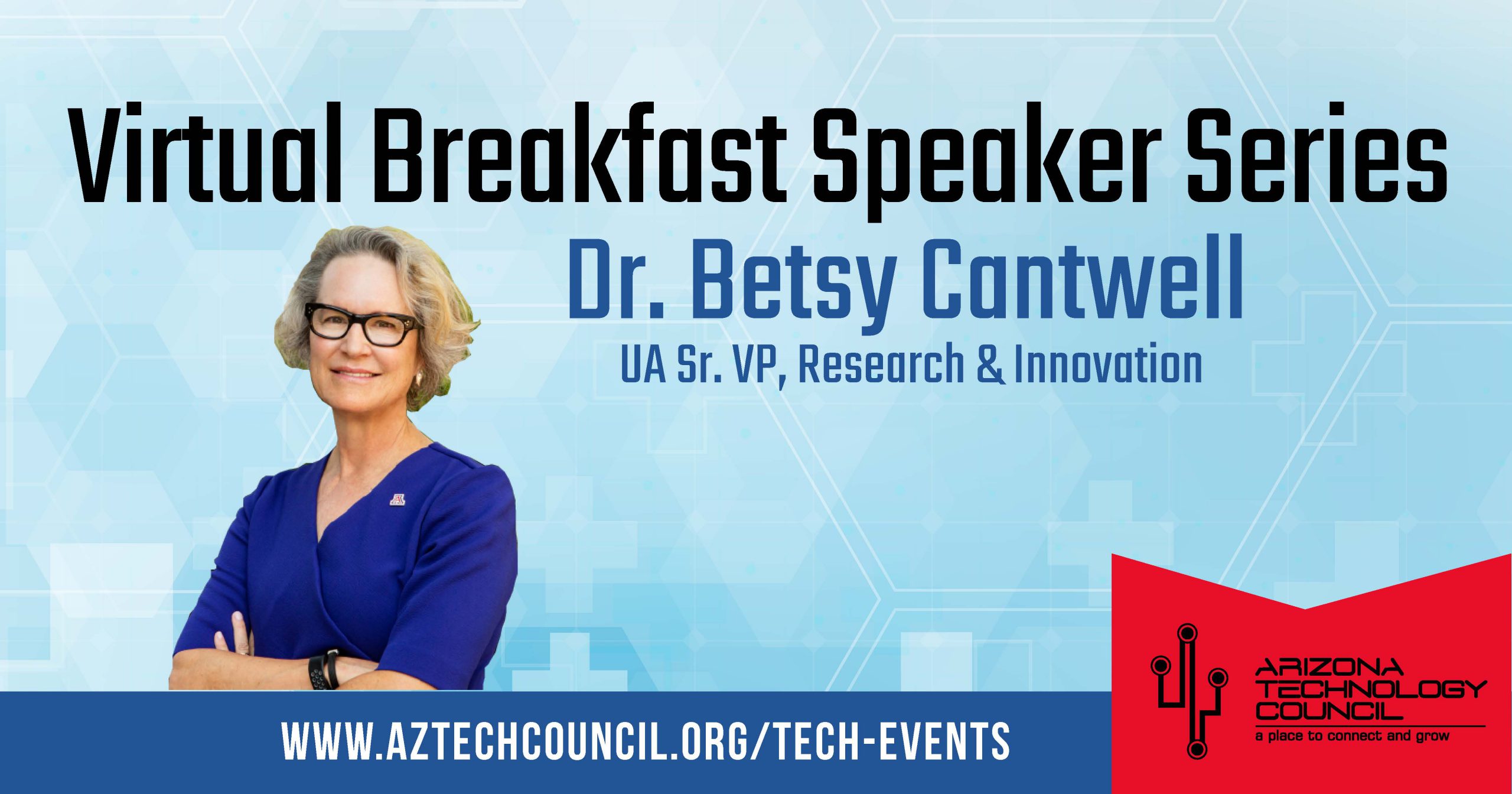Virtual Breakfast Series: The Impact of University Research and Innovation on Pandemic Resilience

With over $730 million dollars in research activity in the last year, the University of Arizona, a Research 1 university, was one of the first universities to respond and transition their resources to studying the COVID-19 virus, creating personal protection equipment and providing antibody testing for the virus.
In this virtual event, hear from Dr. Elizabeth “Betsy” Cantwell, the Senior Vice President for Research and Innovation at the University of Arizona. She provides an overview of the institution’s approach on continuing its research mission in light of the stay-at-home order, opportunities for high-impact innovation during the pandemic and explains how COVID-19 will shift the research model going forward.
Prior to COVID-19, the UA had over 1000 groups conducting research. As of the end of May over 20% of their scientists continued critical research (amidst the stay-at-home order) which led to the university creating face shields, 3D printing masks, and hand sanitizer. 13 teams were specifically tasked with studying the COVID-19 virus and antibody testing. By June, the university was back up to almost 75% full operating capacity in research when Gov. Ducey declared a partnership between the state of Arizona and the university to provide antibody tests for health care professionals and first responders on the front lines.
“A zero percent positive case record is unrealistic which is why it’s so important that the population adheres to safety protocols; wearing masks and social distancing. The virus is here and will continue to be around,” states Cantwell.
Cantwell explains that the pandemic is quickly accelerating the 4th Industrial Revolution. “We are seeing more labs created, more complex engineering, automation is moving faster than before, new product development, and the workforce is changing.”
Federal funding allows the UA to invest in research growth through their BIO safety level 3 labs – which were critical to COVID testing – and allows for rapid pivoting to any area of research designed to solve difficult challenges. The UA is in the top 20% of research universities in the country. The funding also allows for the UA to provide real-life research opportunities and internships for undergraduates to propel them to a STEM graduate program and demonstrate the viability of research through STEM in the real world. “The value of the universities are in their research and innovation,” Cantwell explains.
It was a very informative discussion and worth listening to. Thank you to Dr. Cantwell and the University of Arizona.

